Pulley
A pulley is a simple machine that can be used to lift objects and transmit motion. Pulleys can be either movable or fixed and multiple pulley wheels on one axle can be used ad block and tackle.
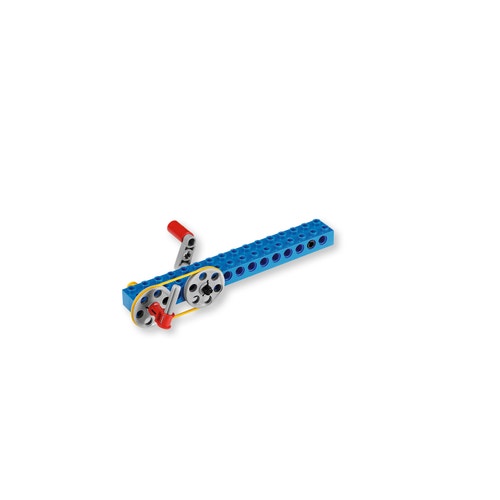
Connect
(5-10 Minutes)
Pulleys are wheels that are moved by ropes, chains or belts around their rims.
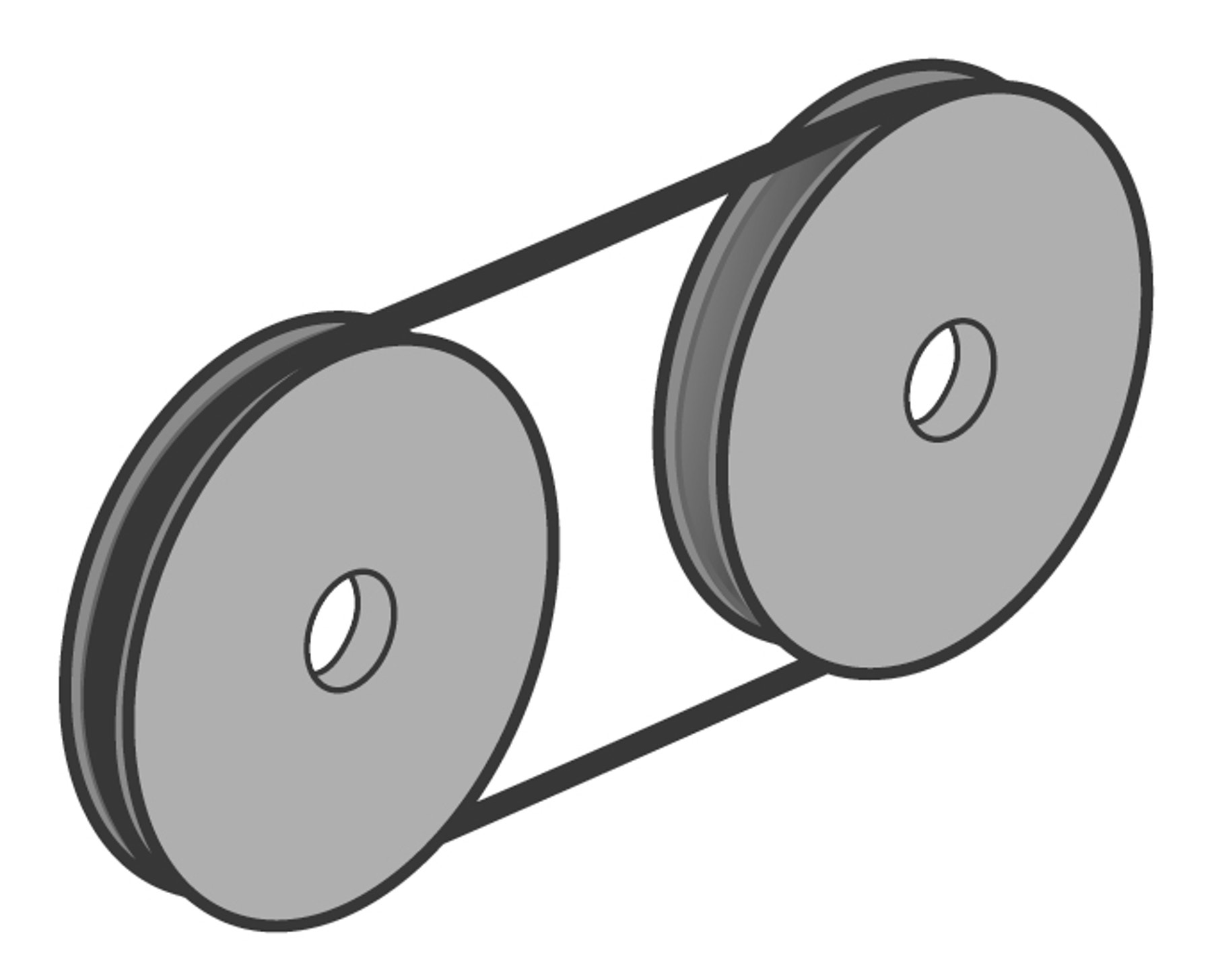
In a belt driven pulley a continuous belt joins two pulley wheels. The wheel to which an external force is applied (effort) is called the drive wheel, and the other the driven wheel. The drive pulley wheel provides the input force and the driven pulley wheel delivers the output force. When the drive wheel turns the belt moves and causes the driven wheel to turn in the same direction. If the drive wheel is smaller than the driven wheel, the driven wheel will turn more slowly than the drive wheel.
Belt driven pulleys rely on belt friction to transmit motion. If the belt is too tight the belt will create wasteful friction forces on the pulley axle and bearing. If too loose the belt will slip and the effort is not used efficiently. Slip is an overload protection safety feature of belt-operated machinery.
For heavy lifting jobs; multiple pulley wheels can be combined into a lifting system that makes lifting heavy objects easier.
Did you know?
Pulleys started the age of mass production in England, when they were produced at the beginning of the 19th century to supply the British Royal Navy with pulley blocks for their war ships during the Napoleonic Wars.
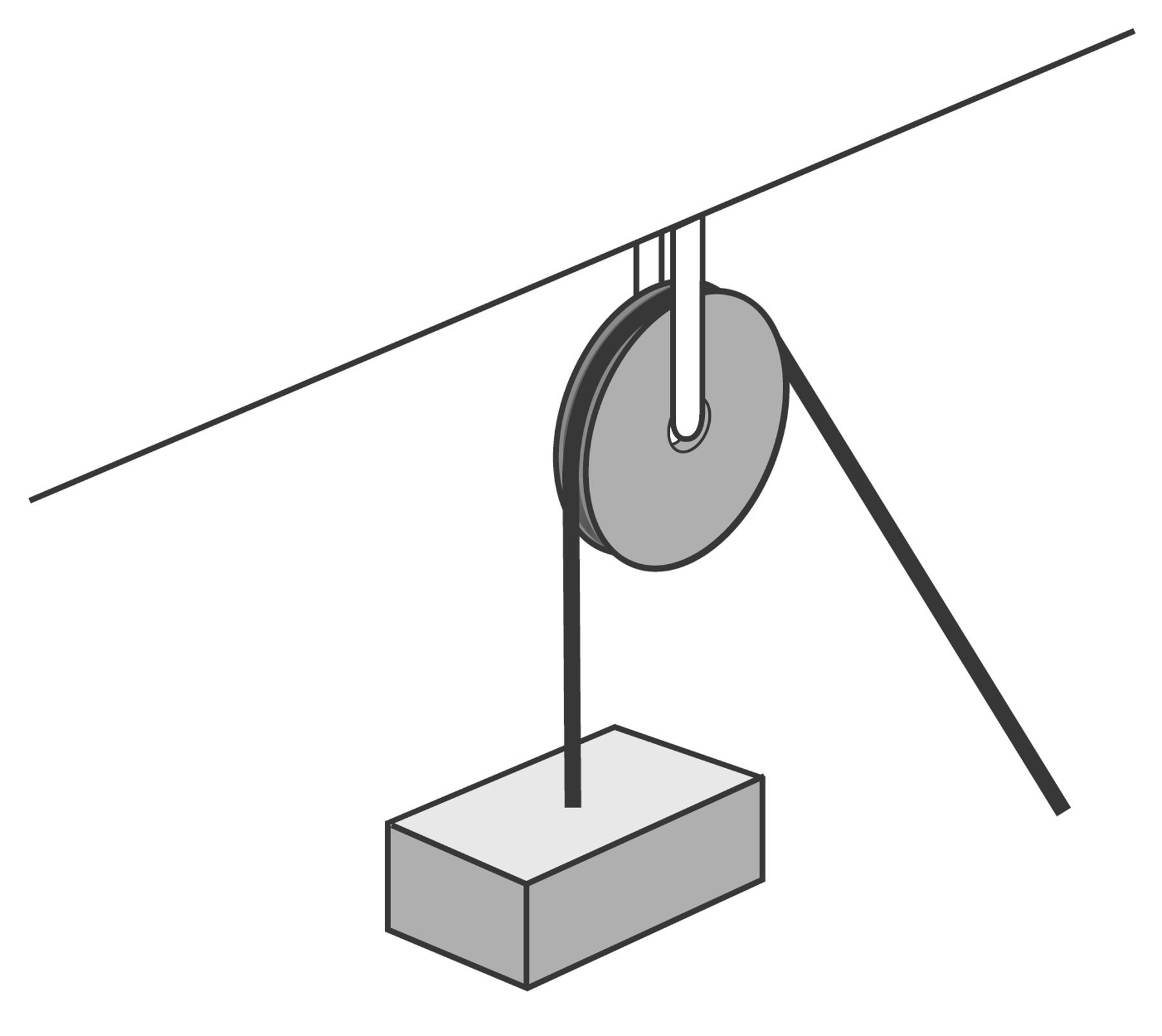
Using a single pulley to lift a load doesn’t make it easier, but it changes the direction of motion without any gains in speed or required effort. It only allows you to lift a load up by the pulling of the rope. Pulleys can be either movable or fixed. The difference between fixed and movable pulleys are that fixed pulleys do not move up or down when the load is being moved.
A fixed pulley is often fixed to an overhead beam or rafter and will only be able to rotate around its own axle. The use of multiple pulley wheels on one axle, in a lifting or dragging system, is called a Block and Tackle.
Common examples of pulleys are found in window blinds, curtains and flagpoles.
Construct
(5-10 Minutes)
Build the following models. Use the Contemplate ideas below and on the Student Worksheet to learn about each model, one at a time.
Build C1 book I, page 18
Build C2 book I, page 19
Build C3 book I, page 20
Build C4 book I, page 21
Build C5 book I, page 22 to 23
Build C6 book I, page 24 to 25
Build C7 book I, page 26 to 27
Build C8 book I, page 28 to 31
Build C9 book I, page 32 to 35
Build C10 book I, page 36
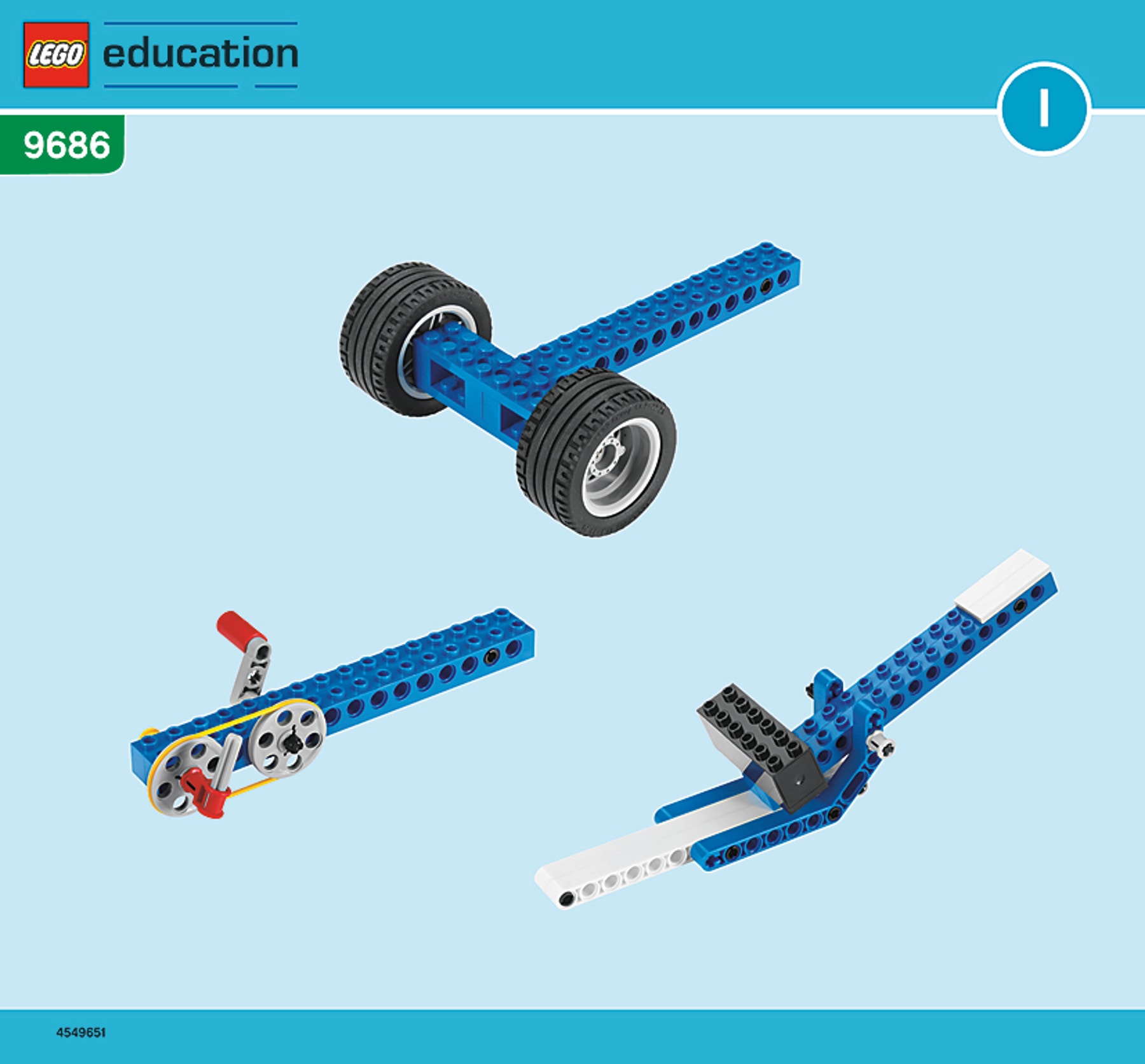
Contemplate
(10-15 minutes)
C1
This model shows a belt driven pulley where the speed and direction of the drive and driven pulley wheels are the same. A light grip on the output pointer will stop the driven pulley wheel from turning, as this causes the belt to slip.

C2
This model shows a belt driven pulley where there is an increase in speed. The driven pulley wheel turns faster than the drive pulley wheel, but the output force is reduced and the belt can slip.

C3
This model shows a belt driven pulley where there is a decrease in speed. The driven pulley wheel turns slower than the drive pulley wheel. This increases the output force, but the belt slips with increasing load.
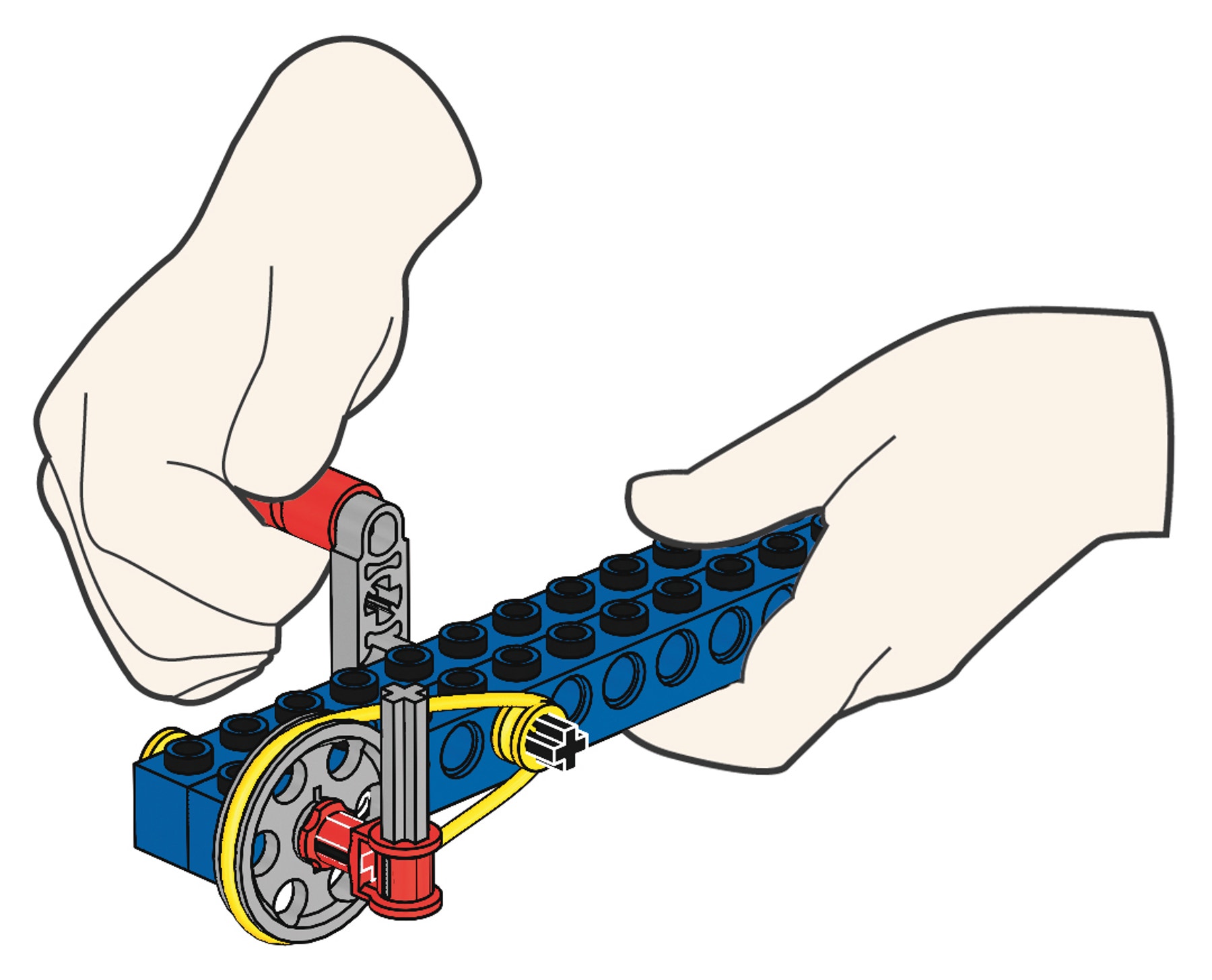
C4
This model shows a belt driven pulley where the speed of the drive and driven pulley wheels are the same, but they turn in opposite directions because the belt crosses over.
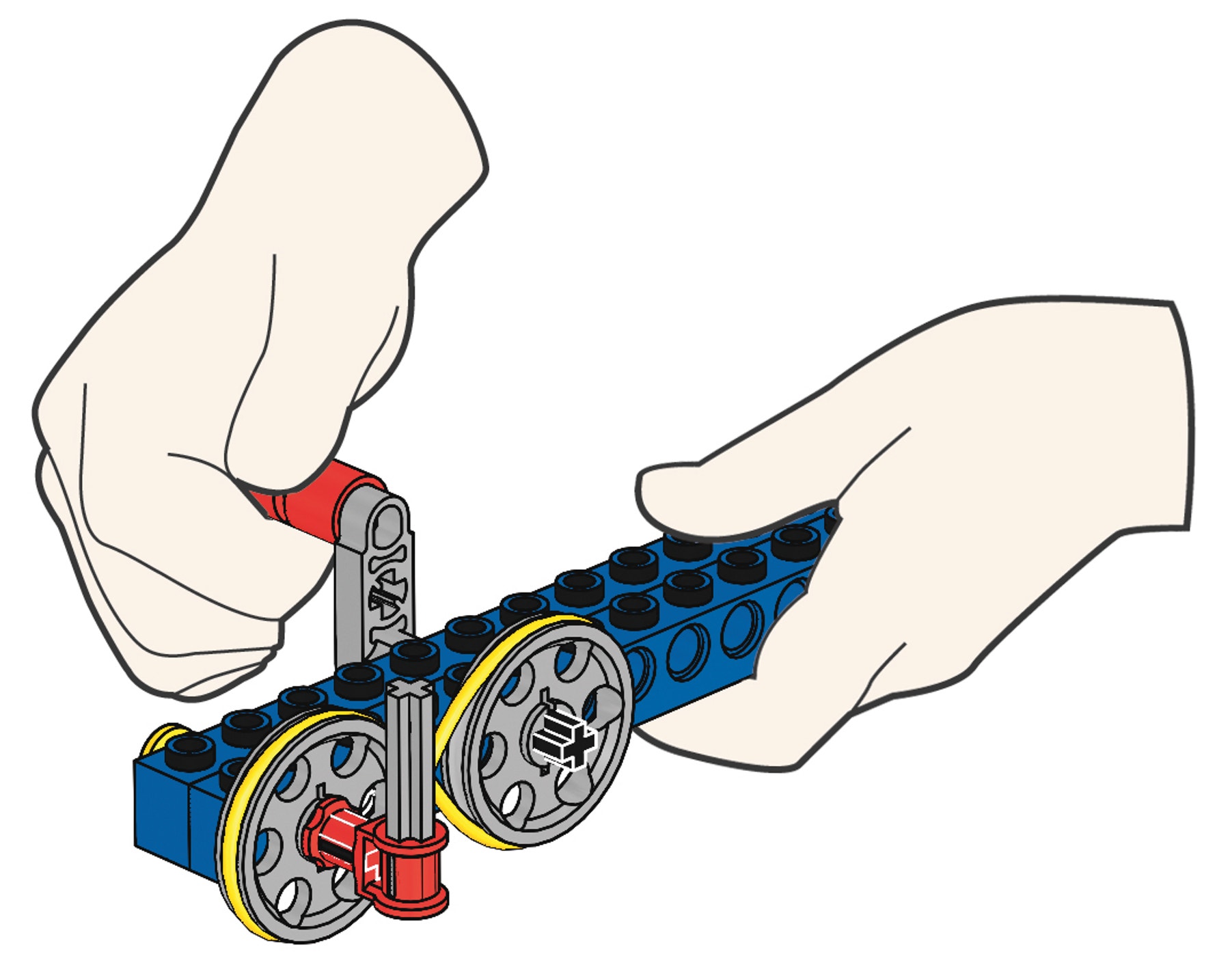
C5
This model shows a belt driven pulley where the speed of the drive and driven pulley wheels are the same, but there is a change in the angle of motion caused by the twist in the belt.
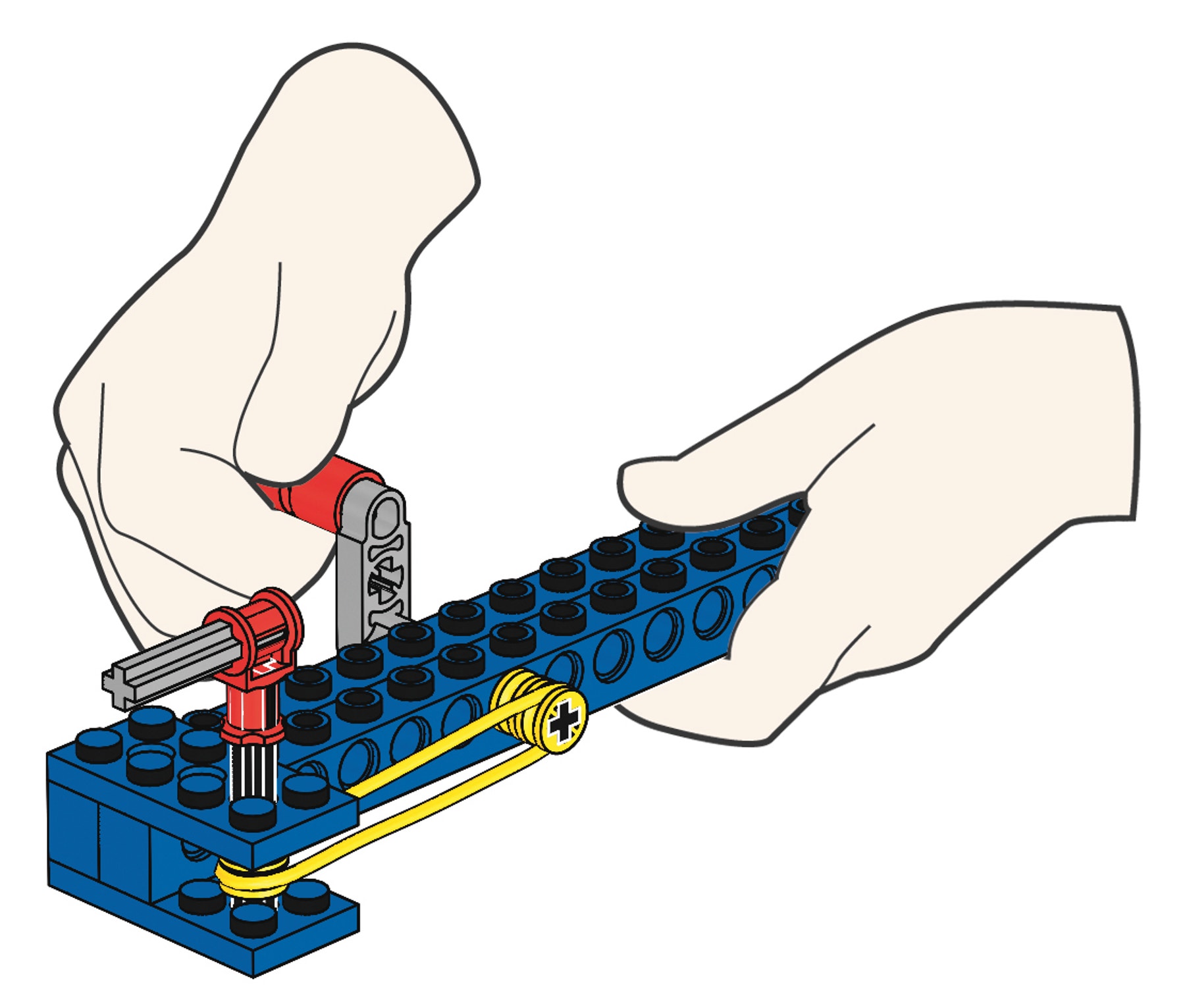
C6
This model shows a belt driven pulley using a compound pulley system. This reduces speed significantly, but at the same time significantly increase the output force.
The smaller drive pulley wheel causes the larger driven pulley wheel to move slower. The small drive pulley wheel on the same axle as the larger driven pulley wheel becomes the drive pulley wheel of the second, large driven pulley wheel.
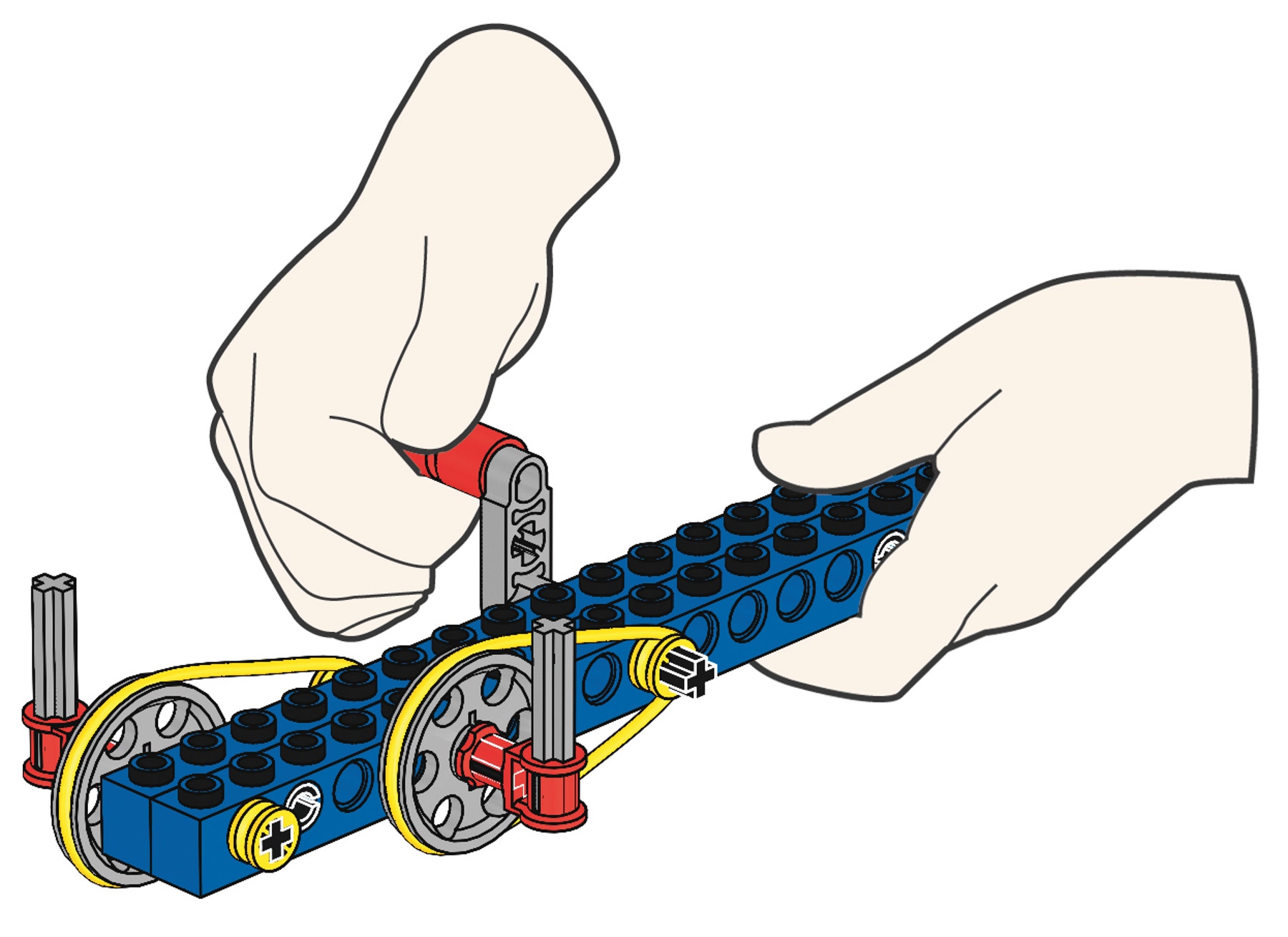
C7
This model shows a belt driven pulley where one drive pulley drives two driven pulley wheels, creating double output. The difference in size of the drive and driven pulley wheels causes a reduction in speed, but an increased output force.

C8
This model generates no increase or reduction in the required effort, speed or distance. The full load of the LEGO® weight element is simply lifted or lowered.
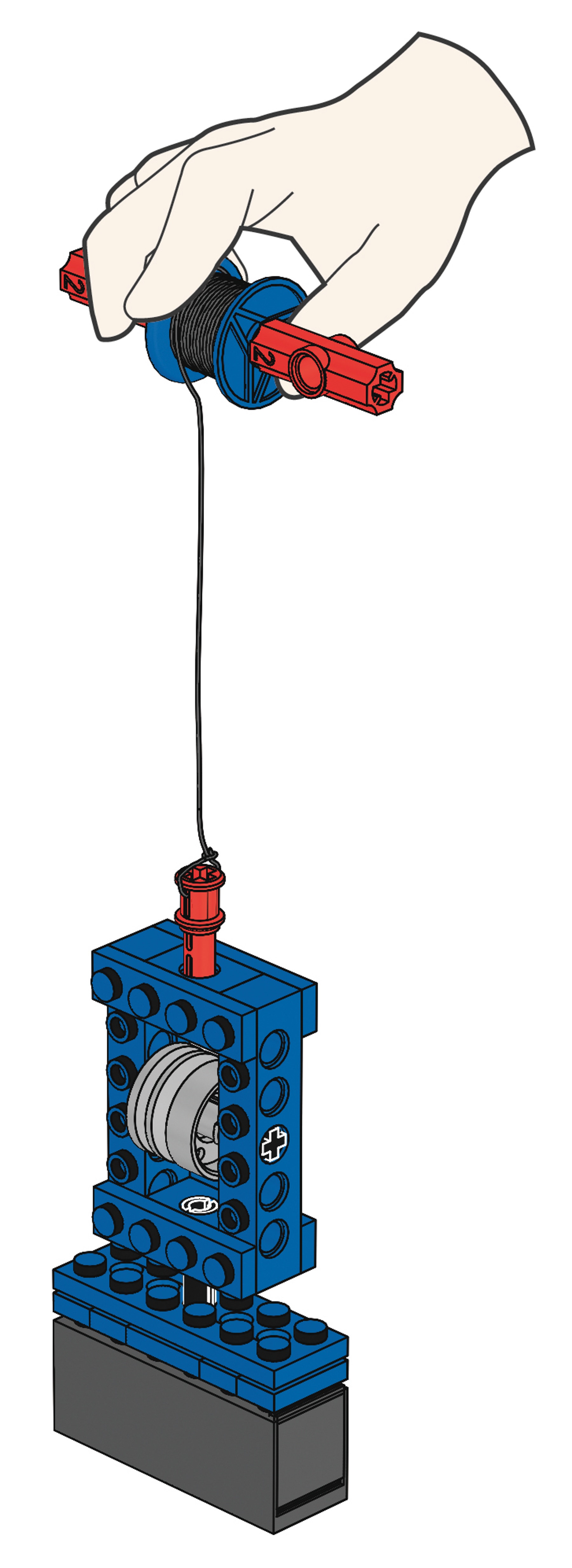
C9
This model shows a single fixed pulley. It generates no increase or reduction of required effort or speed, but merely changes the direction of motion.
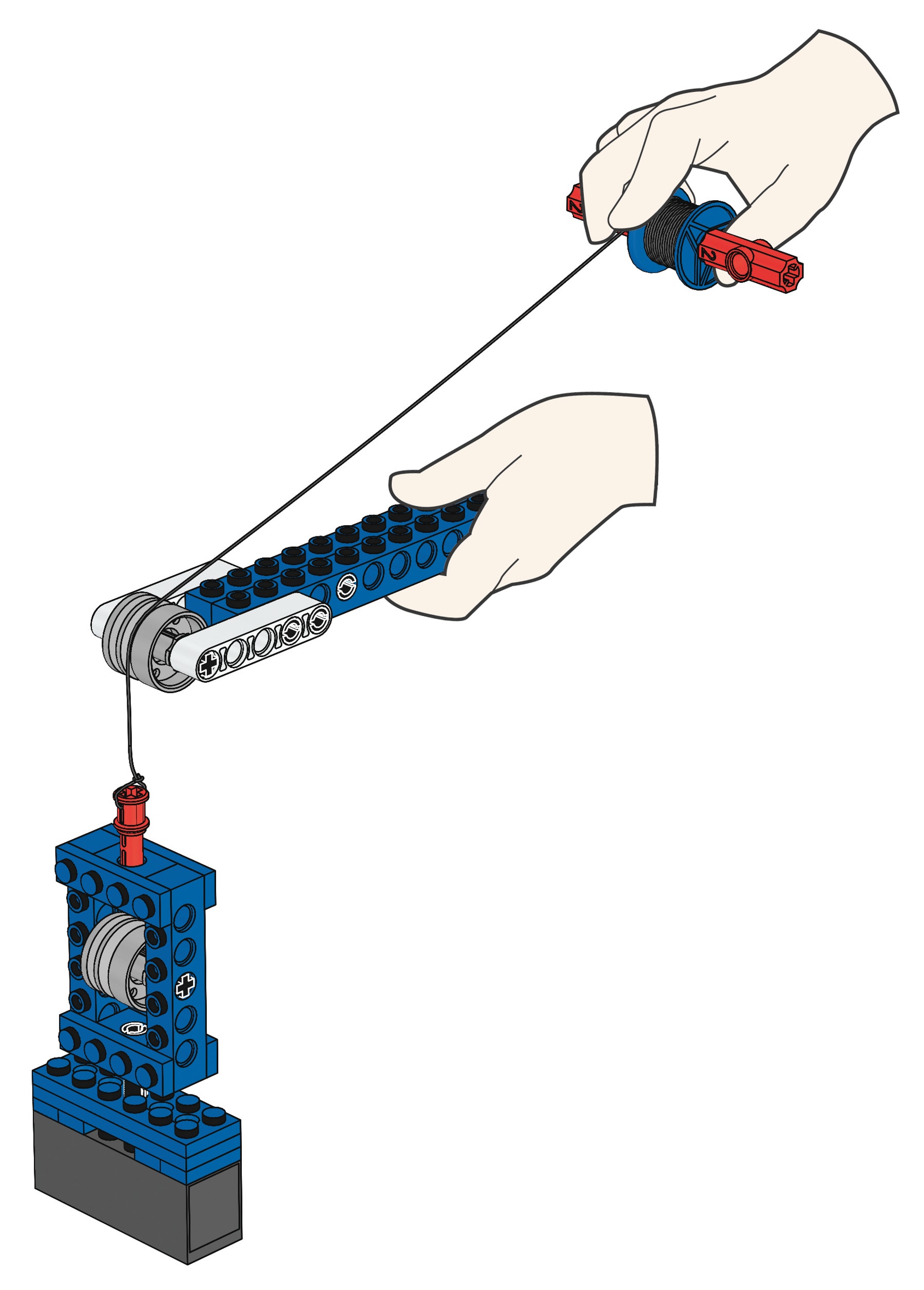
C10
This model shows a fixed and a movable pulley. It halves the effort needed to lift the load, but also reduces the speed at which the load is lifted. You must pull twice the length of string to lift the load.
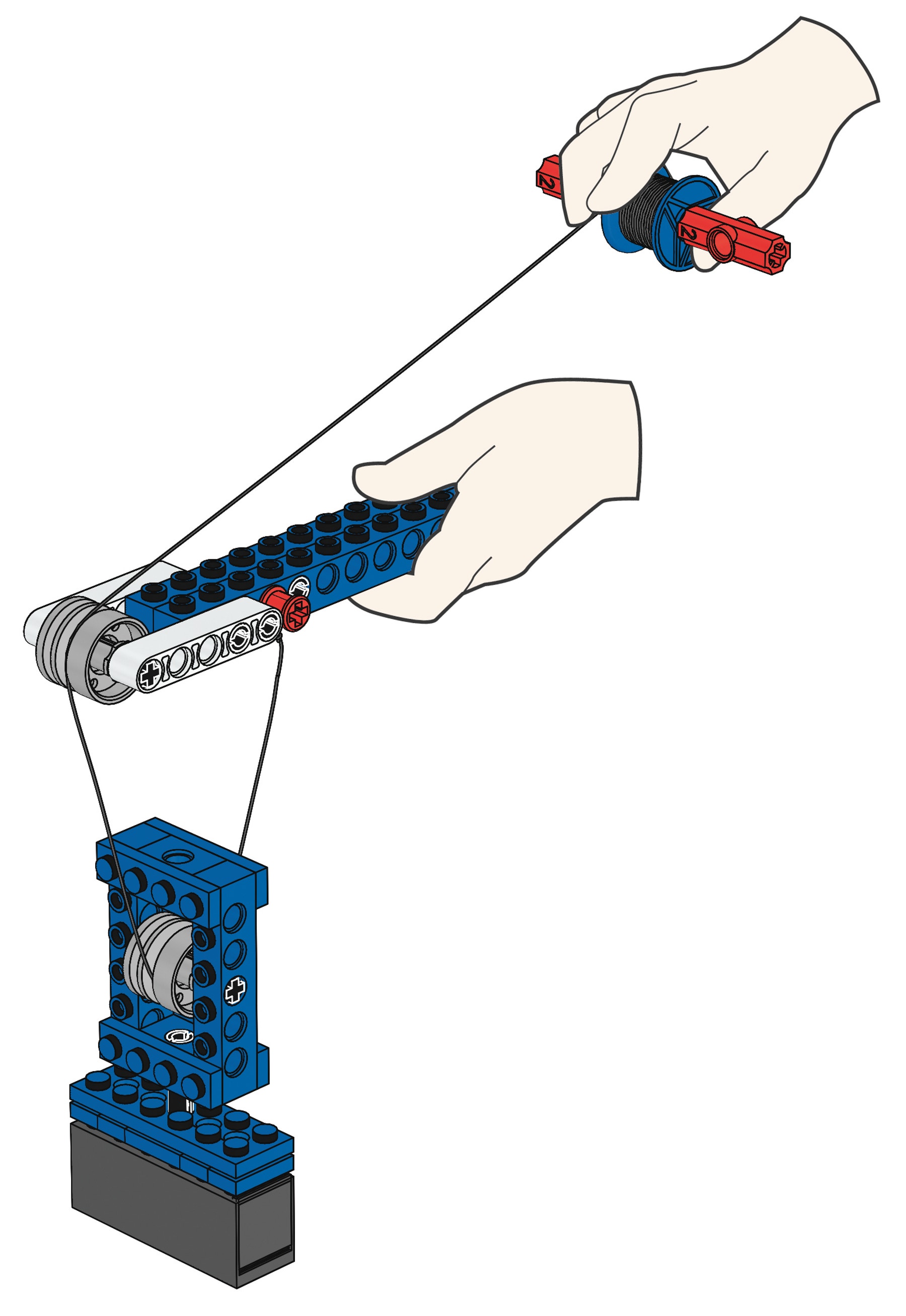
Continue
(5-10 Minutes)
Try other cam lessons!
Now that you have mastered the principles of pulleys try some of the other lever lessons like Fishing Rod.
Teacher Support
Students will learn about:
Using movable and fixed pulleys
Belt driven pulleys
The effect of single and multiple pulley wheels
9686 Simple & Powered Machines Set (two students per set recommended)
Student Material
Share with:
 Google Classroom
Google Classroom



